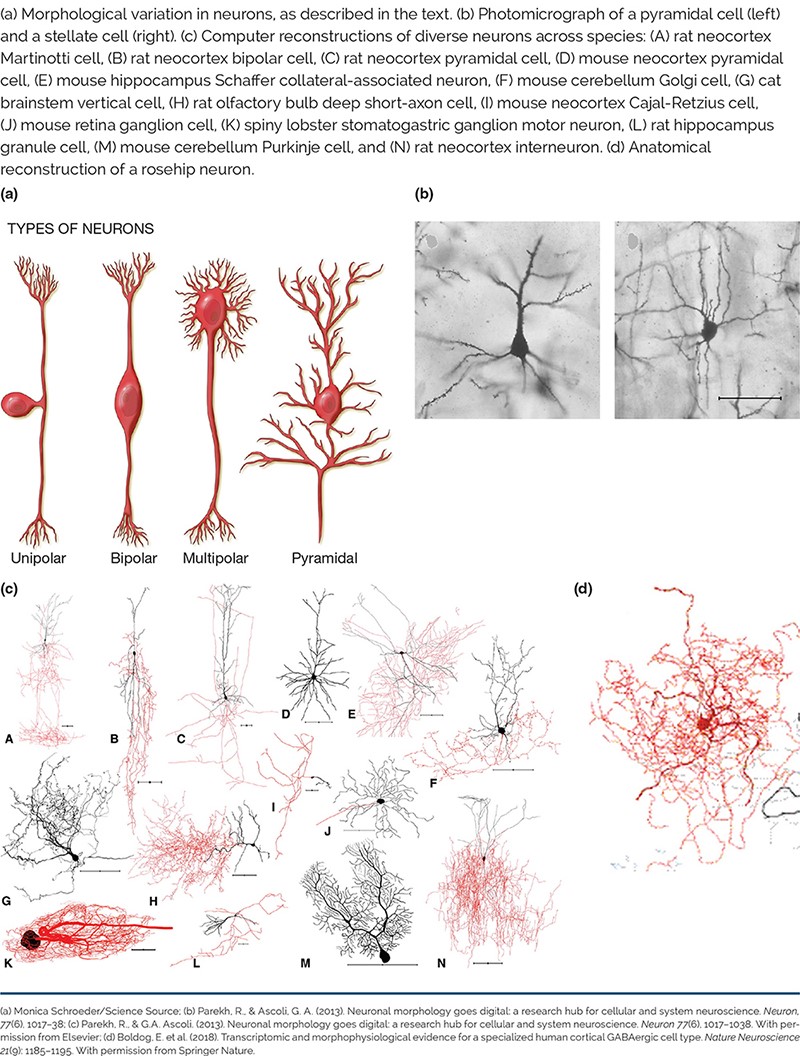 |
| Previous Image | Next Image |
| Description: The majority of neurons shown in Figure 2.11c are from rodents (rats and mice). New types of neurons continue to be discovered. For example, an entire new class of neurons was discovered in the neocortex, hippocampus, and olfactory bulb (Tripathy, Burton, Geramita, Gerkin, & Urban, 2015). The majority of neurons shown in Figure 2.11c are from rodents (rats and mice). New types of neurons continue to be discovered. For example, an entire new class of neurons was discovered in the neocortex, hippocampus, and olfactory bulb (Tripathy, Burton, Geramita, Gerkin, & Urban, 2015). la) Morphological variation in neurons. as described in the Iexl. (o) Photomicrograph or a pyramidal cell (Len) and a stellate cell (right) (1:) Computer reconslruclions of diverse neurons across species (A) ral neocorlex Marlinolli cell (B) ral neocorlex bipolar cell (C) Iral neocorlex pyramidal cell in) mouse neocorlex pyramidal cell lE) mouse ' n w r .. ~ neuron in Golgi celL «3) cat brainstem verllcal celL (H) rat olfactory bulb deep short-axon cell. (l) mouse neooortex Cajal- Retzrus cell, U) mouse letina ganglion cell (K) spiny Lobslel slomazogaslric ganglion motor neuron, (L) rat hippocampus granule cell. (M) mouse cerebellum Pulkinje cell. and (N) ral neocortex inlerneuron. (d) Anatomical reconslruclion or a rosehip neuron. (a) (b) TVPES OF NEUHONS Unipolar Bipolal Mullipolar Pyramidal (c) L » “Keno ) NW me n sea ”cw lung 1 ran-ma win Du a Mal (mm are» names Wan pamssmn from WV anure Picture Stats: Views: 193 Filesize: 242.64kB Height: 1056 Width: 800 Source: https://biology-forums.com/index.php?action=gallery;sa=view;id=48369 |
